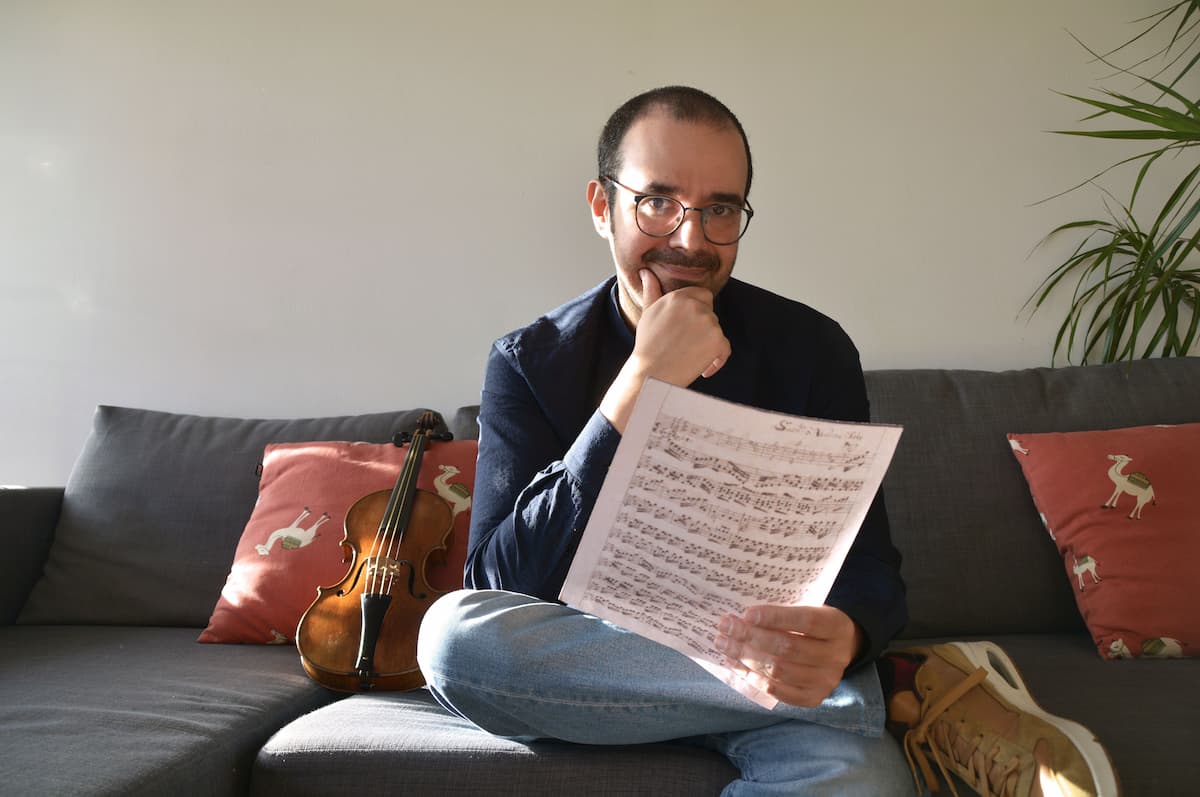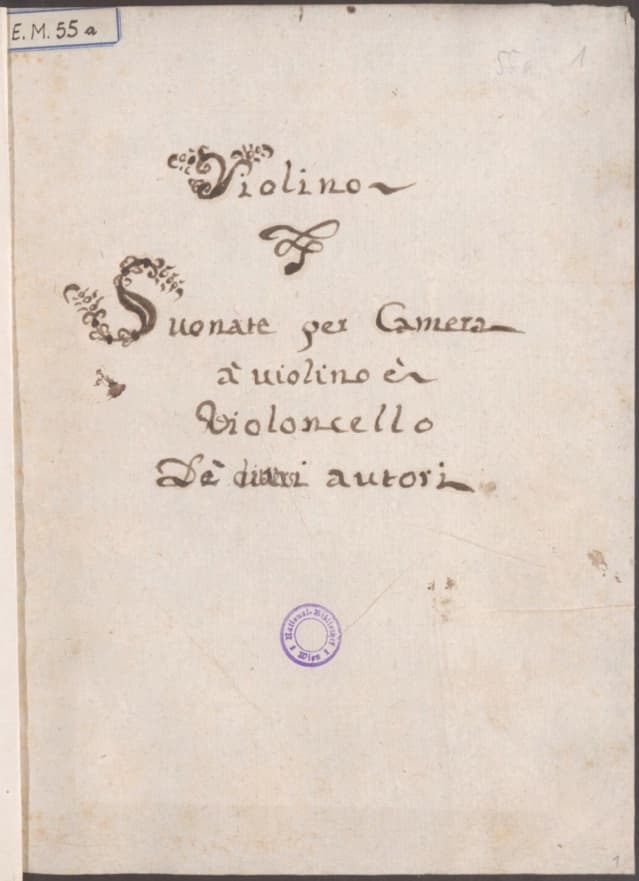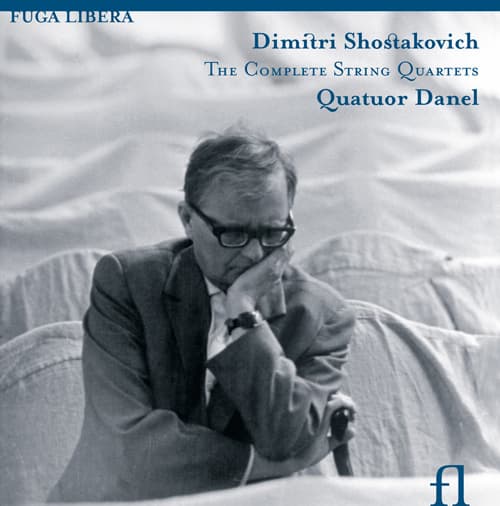As violinist Javier Lupiáñez and cellist Inés Salinas sought repertoire for their group Scaramuccia to perform, they were going through a collection of music by composers connected with Bologna. They reviewed manuscript scores from the Austrian National Library by composers including Aldrovandini, Marcheselli, Torelli, Mazzolini, Grimandi, Jacchini, Laurenti, Perti, Bernardi, and Belisi. There were 13 pieces in the collection of Suonate per Camera | à violino è | Violoncello | Dè diversi autori and as they played through the works, they were more alike than different – simple style, mostly first position playing for the violin, mostly dances. And then they hit piece 13 – the last work in the collection.

Javier Lupiáñez

Inés Salinas

Suonate per Camera à viollino è Violoncello Dè diversi authori, MS. E.M. 55a (Austrian Nation Library)
It was everything the other pieces were not: complex, with sudden changes of mode from major to minor, use of augmented seconds, and, probably most importantly, containing references to other Vivaldi sonatas and concertos. The stylistic elements were the most persuasive because this work was more than one of Vivaldi’s students could have created. Lupiáñez immediately contacted Prof. Fabrizio Ammetto, a colleague and a Vivaldi specialist, who verified Lupiáñez’ suspicions. Lupiáñez’ discovery in July 2023 led to an article and an edition being prepared and the work’s premiere in January 2024. Now, the work is being released as a CD Single on the Snakewood label.
The discovery and dissemination of the new work was a worldwide effort: A collection of music from Bologna is placed in the Austrian National Library. Lupiáñez in The Netherlands looks at the collection and consults with Ammetto in Mexico. British musicologist and Vivaldi specialist Michael Talbot confirms the work as Vivaldi. The work was given its premiere on Radio Clásica in Spain, and it will receive its Italian premiere next week. Its Spanish premiere will be in Madrid on the day after Vivaldi’s birthday on 4 March. Such is the quick-moving and dynamic world of classical music these days!
The greatest surprise about this recording is the authority with which Javier Lupiáñez and Scaramuccia attack the piece. Lupiáñez is both a practicing violinist and a musicologist, with his degree work on Vivaldi. What you hear is not just another sonata by Vivaldi but a very special work that, in the opinion of Michael Talbot, was specifically written to showcase the master violinist and composer that was Vivaldi. The embellishments and cadenzas you hear in the performance share both Javier Lupiáñez and Antonio Vivaldi as their composer.
We think of Vivaldi in the early 1700s as solidly employed by the Pio Ospedale della Pietà from his start in 1703. However, his contract was up for annual renewal until February 1709, when he was dismissed, probably due to a funding problem. Vivaldi set out to find a new position, and it is thought that this violin sonata would have been his ‘calling card sonata’. The violin part was custom-written by him for himself, the internal musical references are all to his own music (something very common for Vivaldi to do), and the compositional technique was a clever combination of a concerto made into a sonata. Vivaldi was presenting his capabilities on so many fronts as both a composer and a performer. The continuo part, as Lupiáñez noted, could be played by anyone, but the violin part was solely for the composer.
Vivaldi returned to the Pietà in September 1711, and Lupiáñez and Ammetto believe that this sonata may have been written in that window between February 1709 and September 1711. A terminus post quem of 1709 and a terminus ante quem of 1715 seem to be the limits of when this work could have been written.
This discovery changed the way we consider Vivaldi in the early 1700s. We know he was ambitious beyond his position as a violin teacher at the Pietà, but this work gives us a true insight into how he regarded his capabilities.

Vivaldi: Sonata for Solo Violin, RV 829
Javier Lupiáñez, soloist, and Scaramuccia
Snakewood Editions: Catalogue no: sdig202401
Price: €4.00
Digital purchase link: snakewoodeditions.com
For more of the best in classical music, sign up for our E-Newsletter



